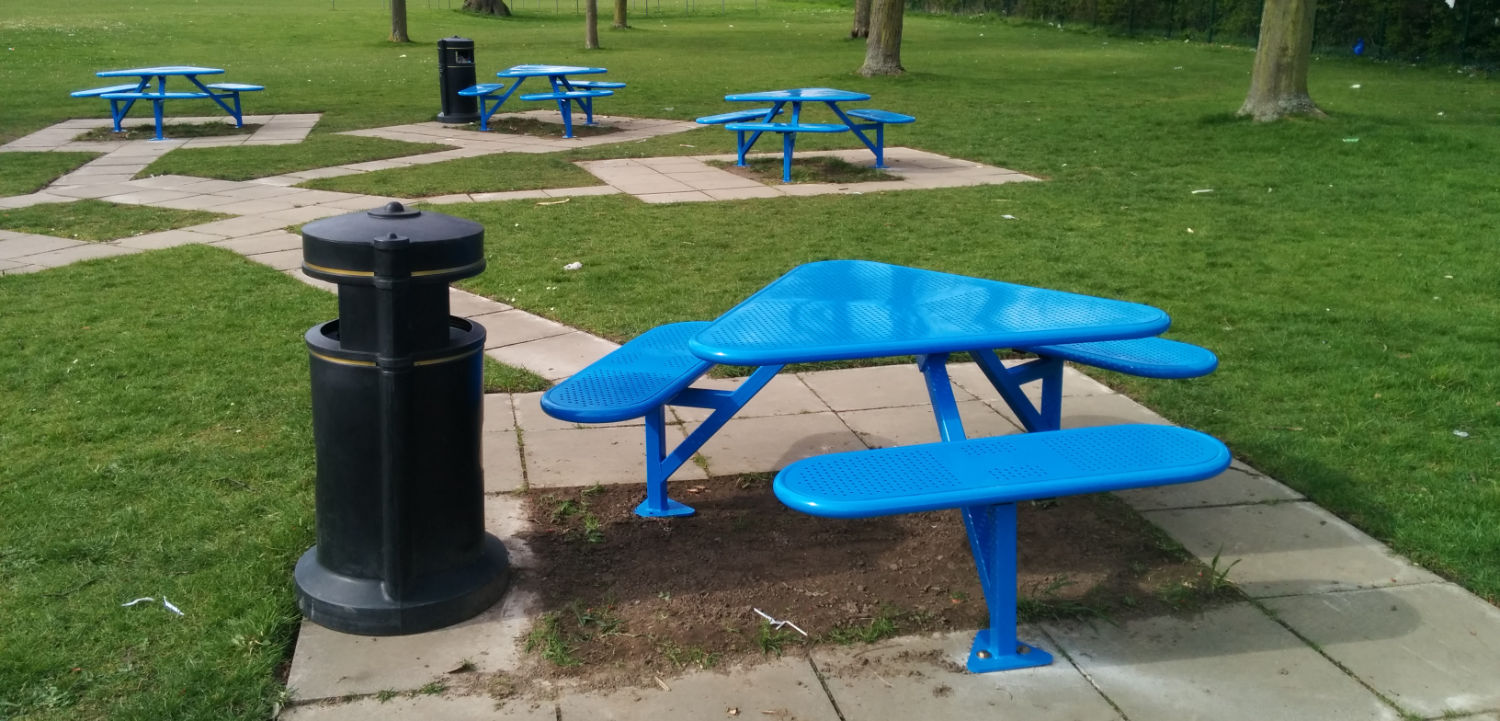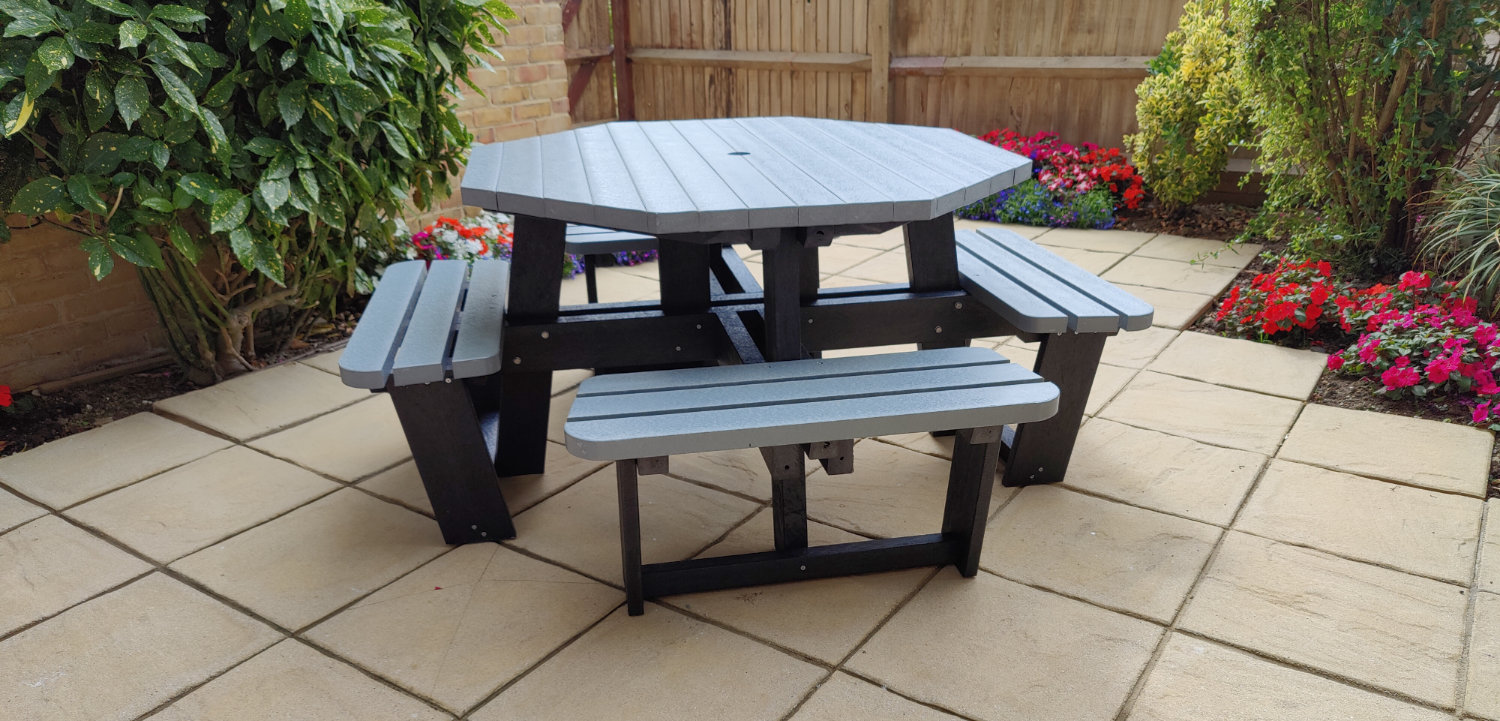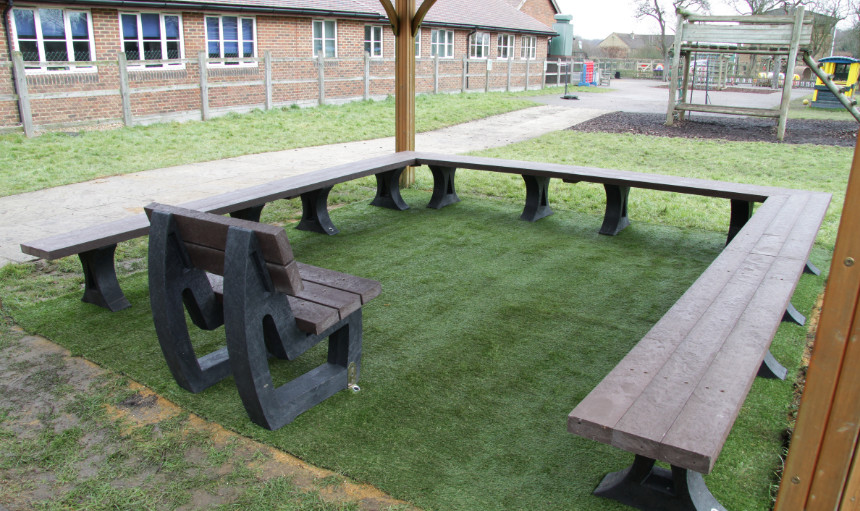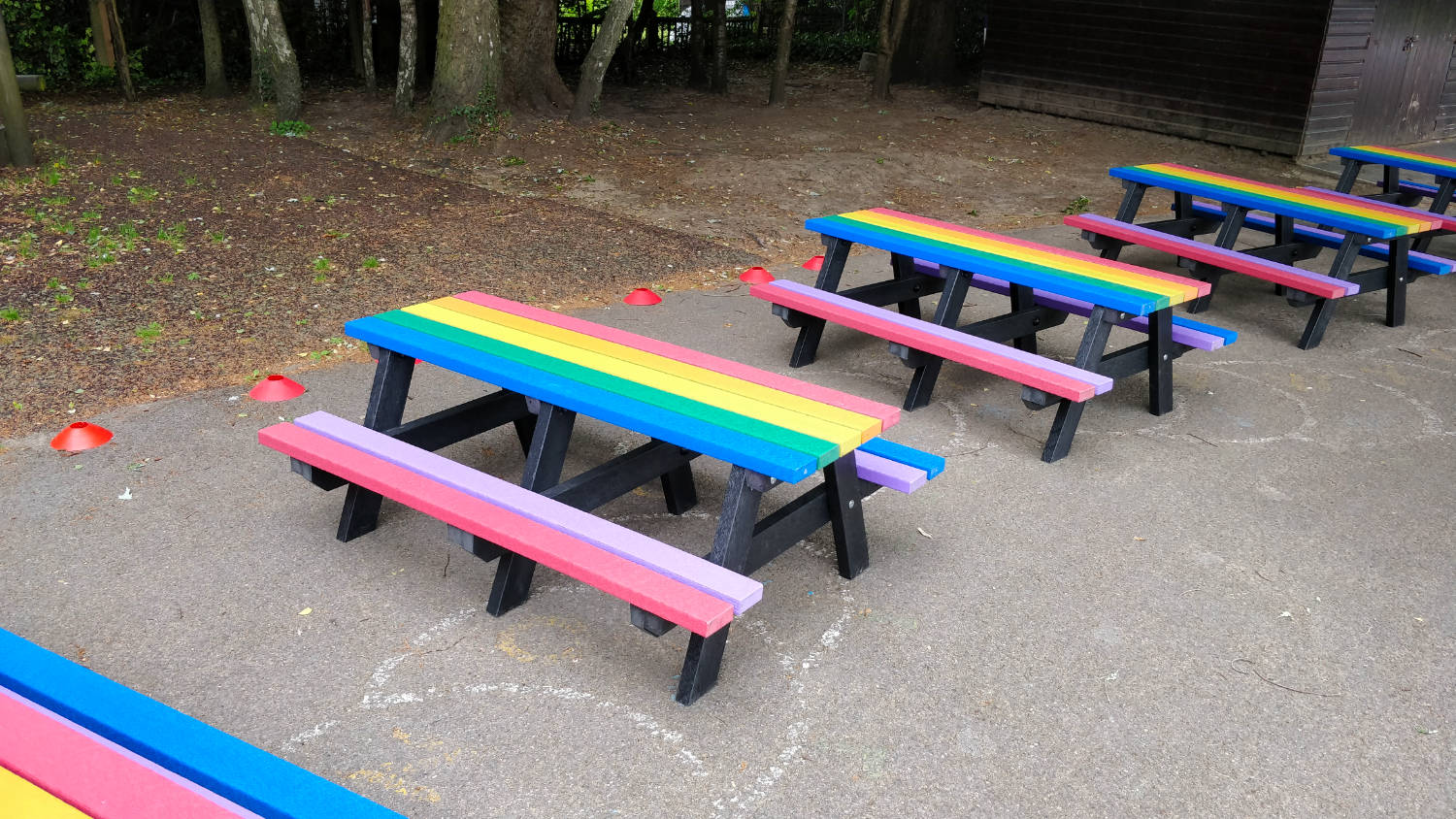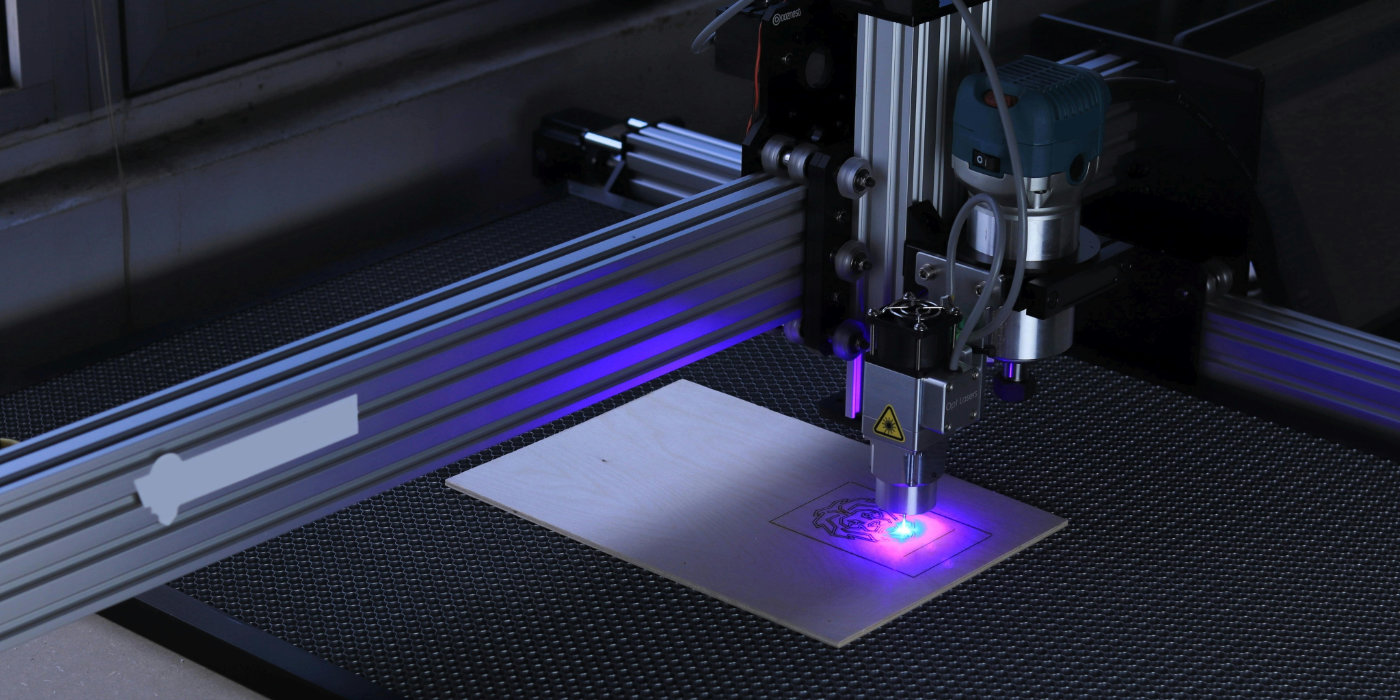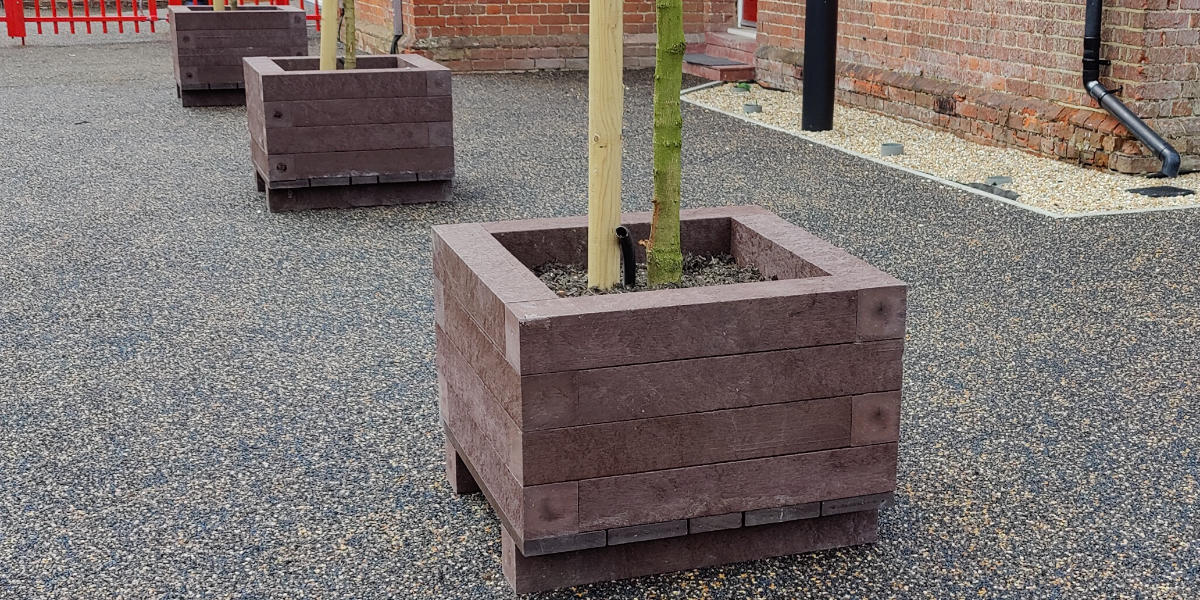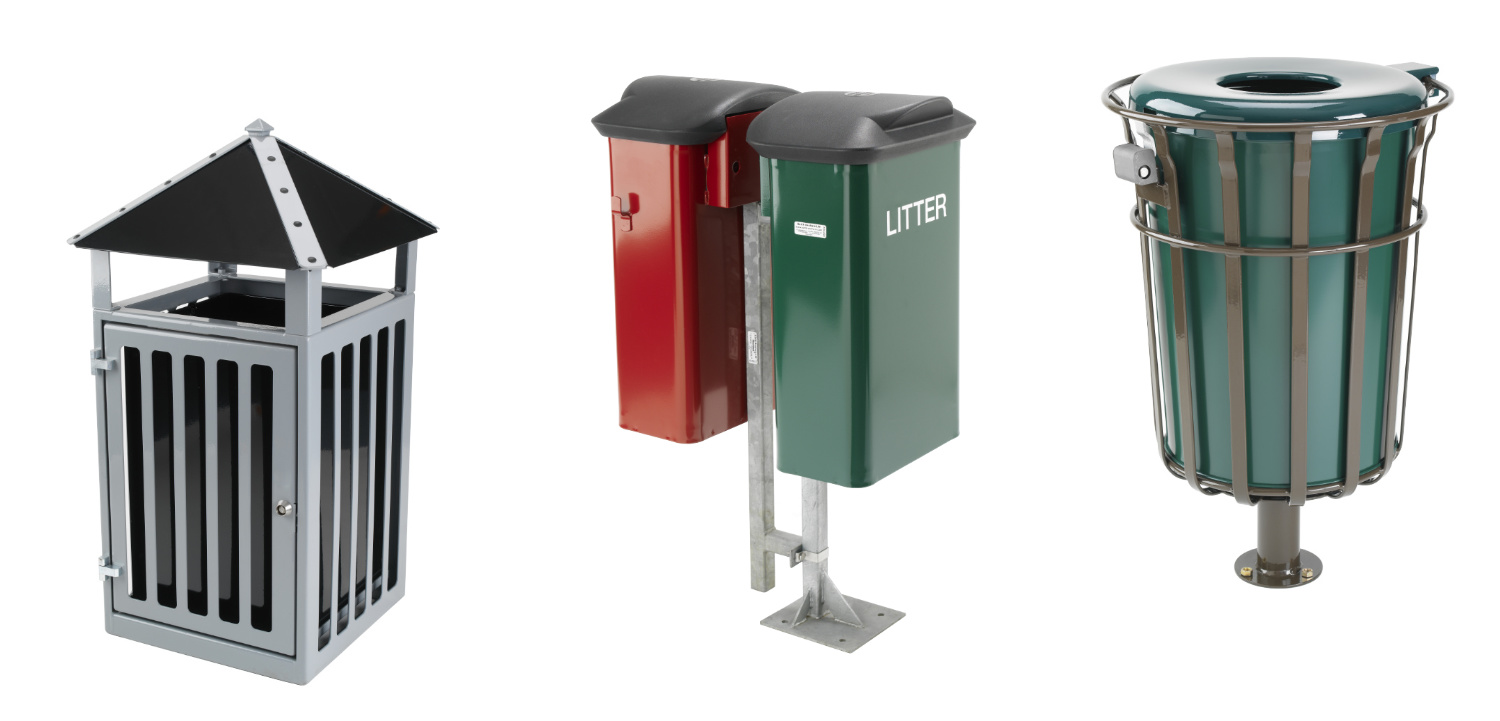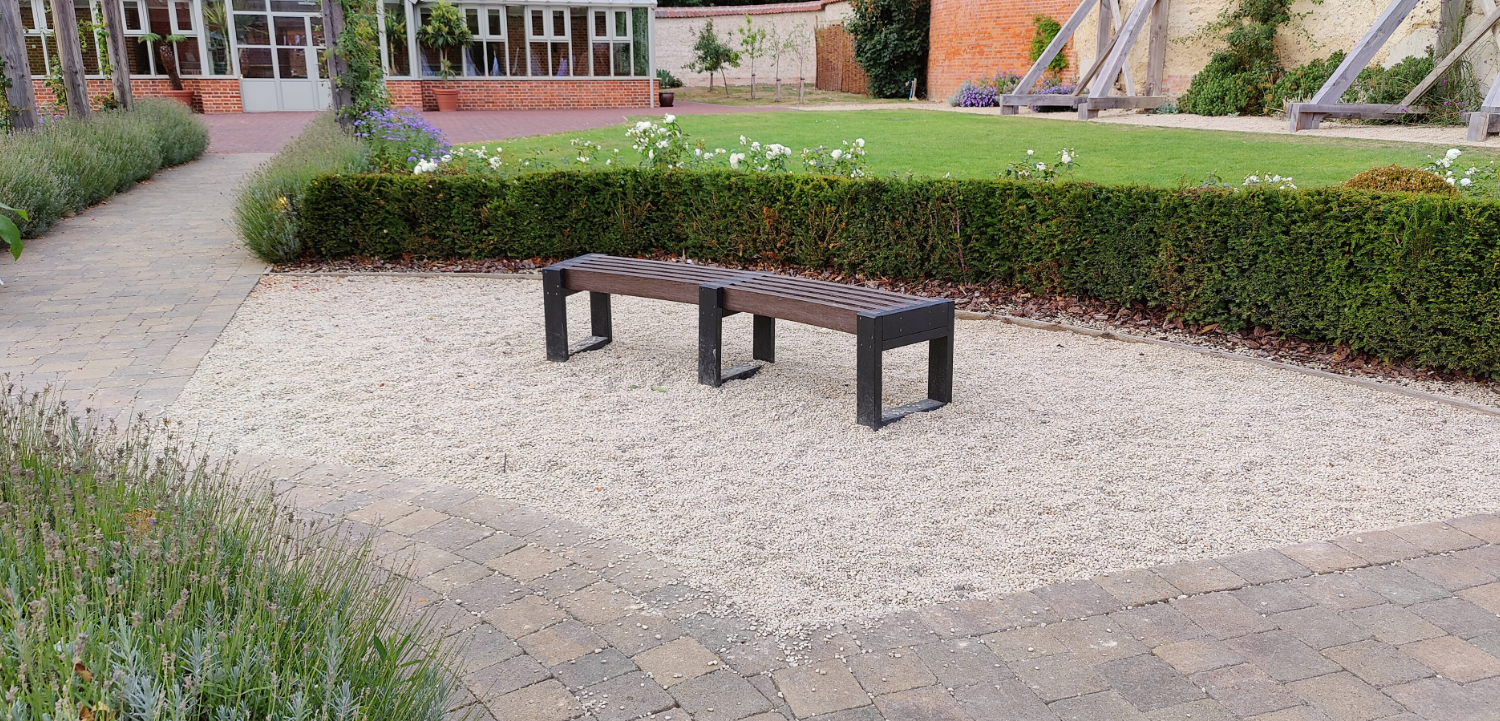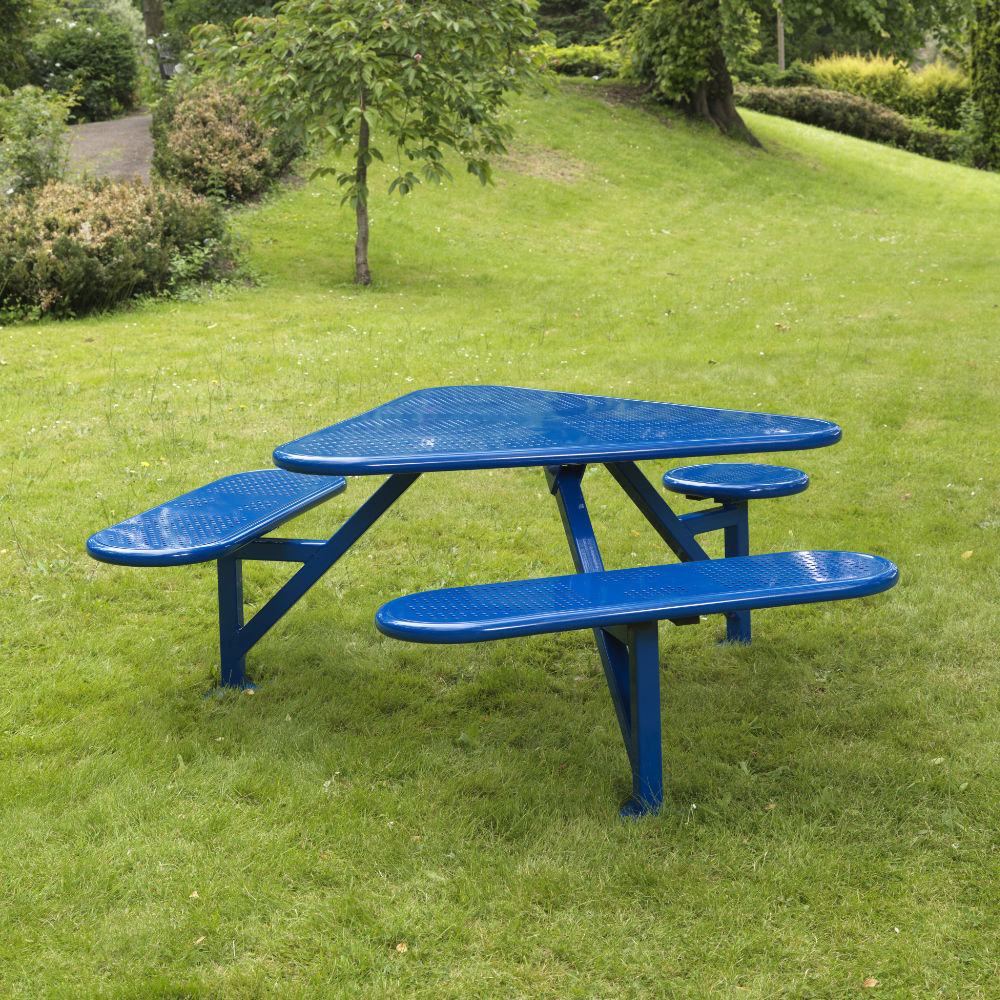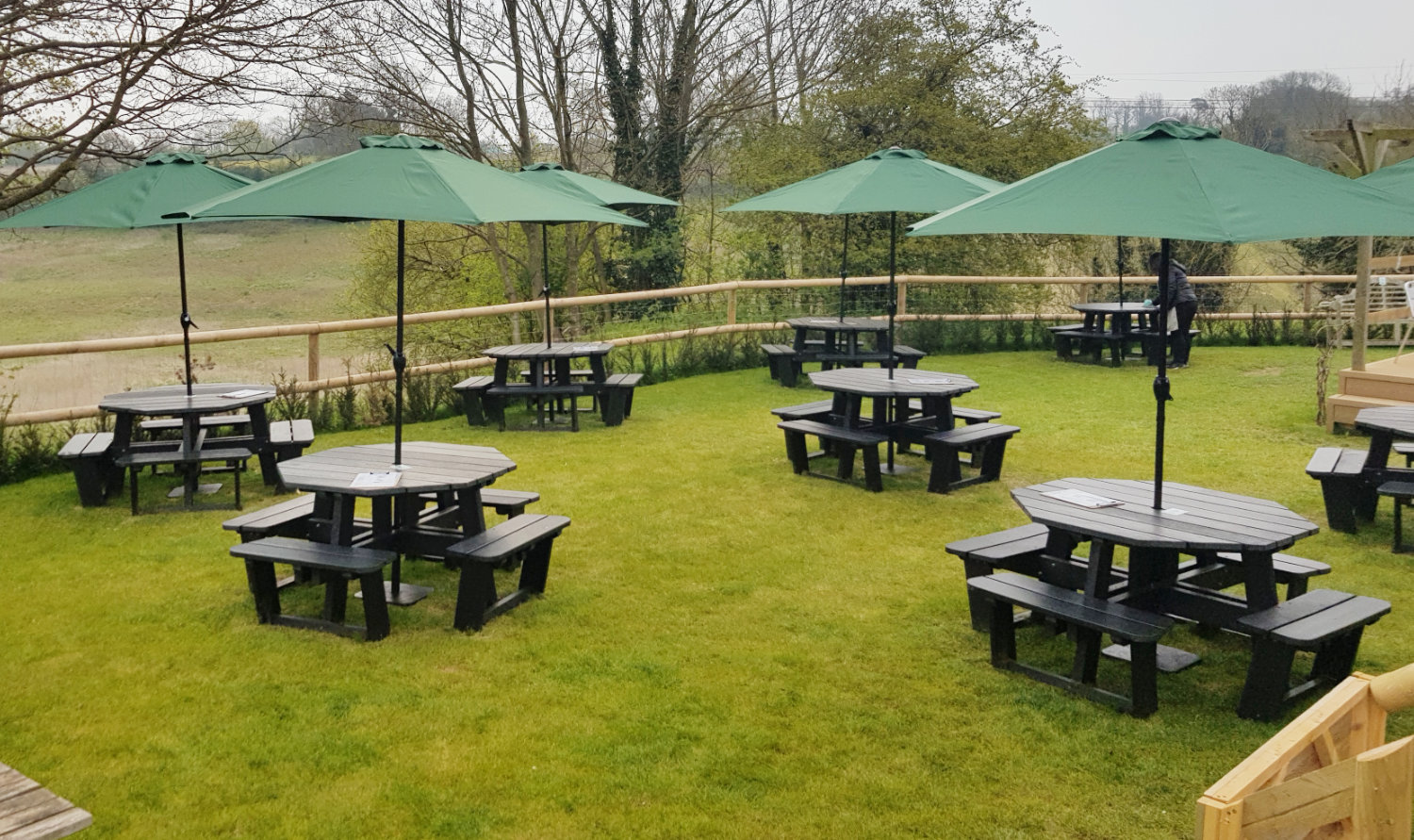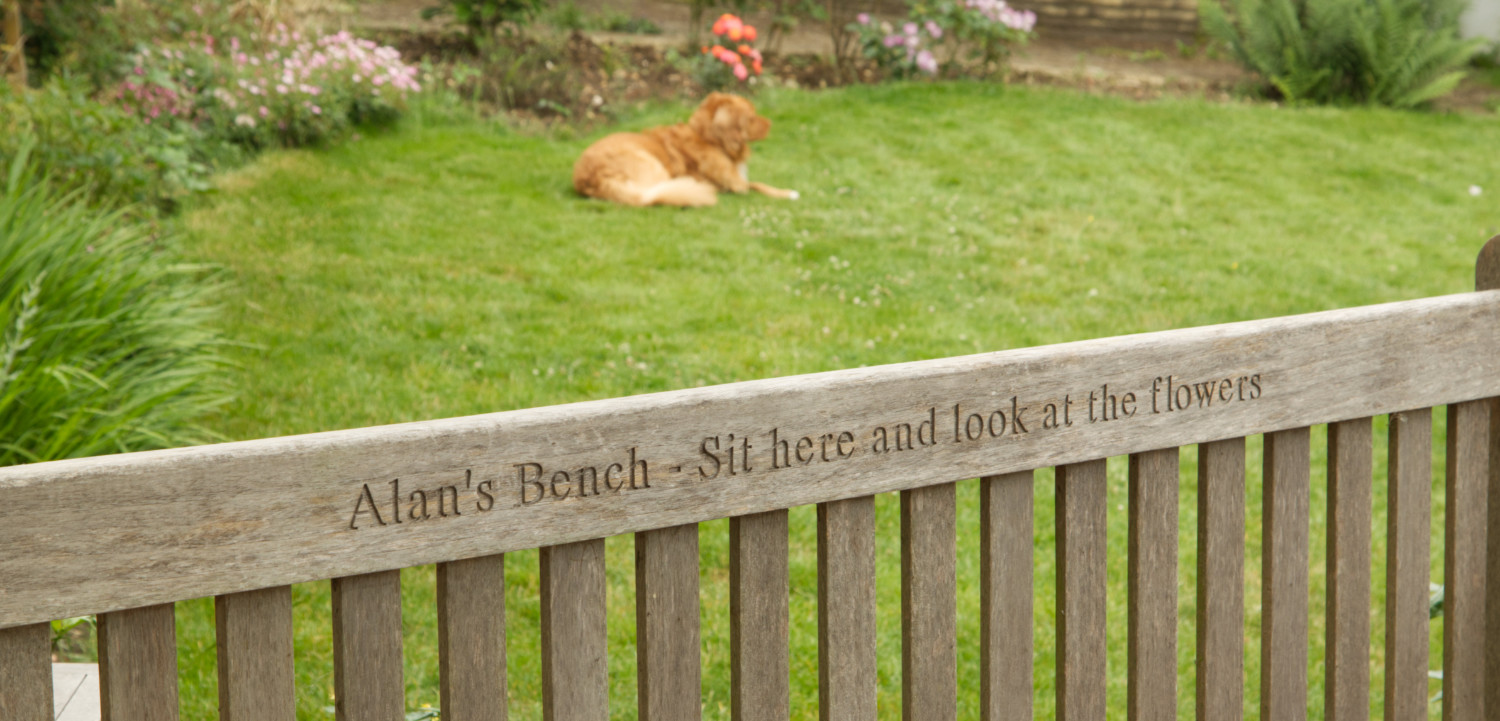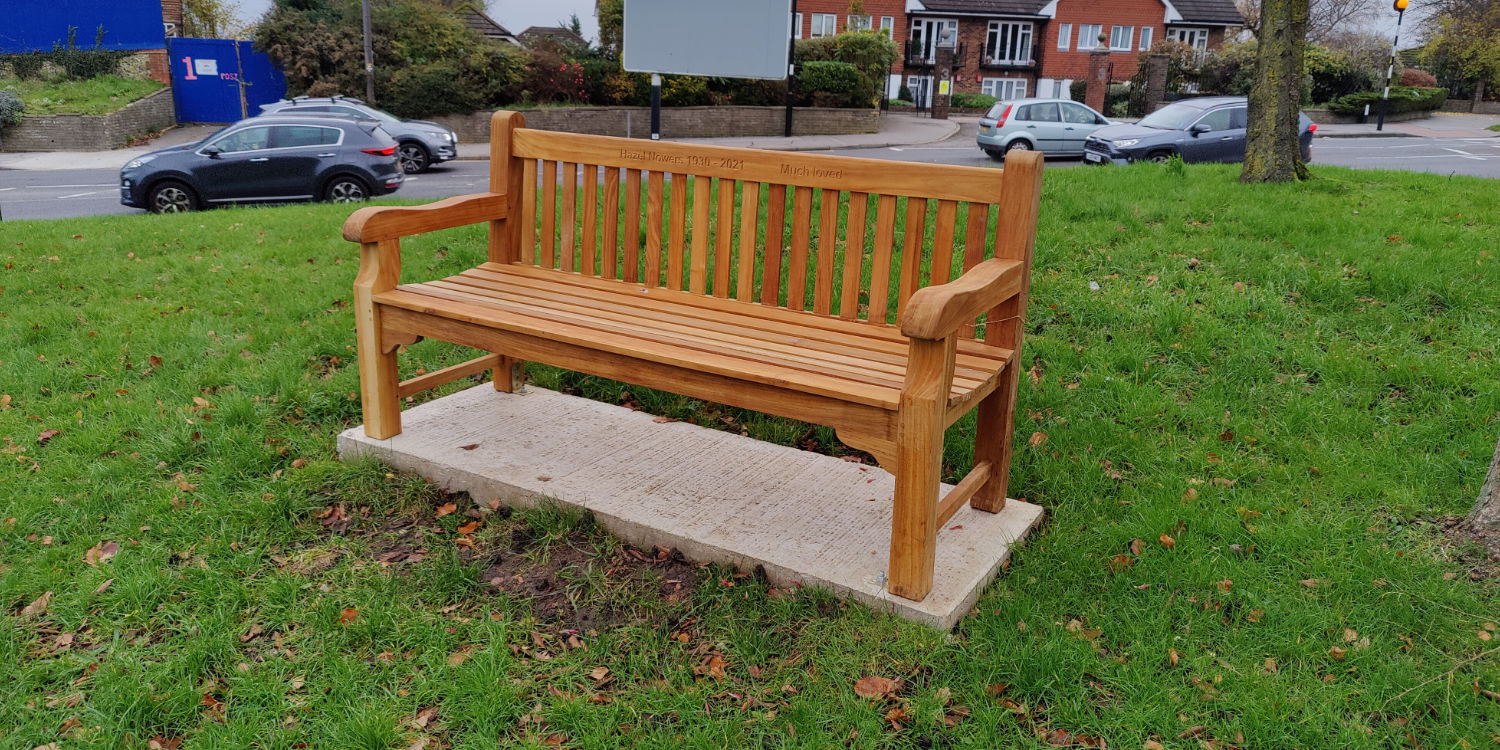What’s the best outdoor furniture material? It’s a question we get asked a lot. Unfortunately, there’s no one answer. There are so many different types of outdoor furniture material, and it often comes down to personal preference! However, as experts in outdoor furniture, we have more than a few insights.
So here’s everything you need to know about the different types of outdoor furniture material. We’ll cover a lot of info here, so let’s get started.
Intro to Outdoor Furniture Materials
The first thing to understand about choosing between your options when picking out outdoor furniture and materials is that you’re often going to be looking for some of the same characteristics as when choosing indoor furniture. Durability is an obvious one, as is price. Then there’s style, which is surprisingly easy to overlook.
However, where indoor and outdoor furniture differs is that one of them will be exposed to the elements. Your indoor sofa or hotel lobby bench won’t have to deal with rain, snow, or wind. So when you’re comparing the types of outdoor furniture material, always keep that all-important weather exposure at the back of your mind.
Outdoor Furniture Material Factors
Before we take a look at the different types of outdoor furniture materials you’re going to choose from, let’s briefly cover the different factors you need to be aware of before making a final decision. Remember that you can read all of the outdoor furniture material reviews in the world, but every setting is different — what works for one person or business may not be suitable for you.
Moisture/Rain
Water is one of the biggest threats to your outdoor furniture’s durability, longevity, and comfort. If you’re planning to place garden picnic tables or benches in a location where there is little or no cover, you will have to choose a type of outdoor furniture material that isn’t going to be affected by rainfall.
Mould, Rot, and Mildew
This is another water-based consideration, but it’s just as important. It’s not just about rainfall because even moist, humid environments can lead to mould and mildew developing. Rot is something you want to avoid at all costs, as it damages the integrity of your outdoor furniture.
Mould and mildew can be easily cleaned off, but they can be unsightly, so never overlook the water aspects of your environment. Remember that sunlight is a great way to ward off mould and mildew, and will also have the added benefit of helping to age timber furniture to a softer tone. Dark, damp spaces will tend to lead to more unpleasant wooden outdoor furniture.
Corrosion/Rust
That’s right. Another water-based issue to be aware of! Seriously, many of the materials used in outdoor furniture do not play well with water or moisture of any kind, and rust can be particularly frustrating. This is something to bear in mind, especially if you’re somewhere more coastal, as salty air combined with water will accelerate corrosion.
That’s why it’s so important to ensure that your furniture (and fittings) are made from materials that can withstand water damage, such as stainless steel. High-quality protective finishes such as galvanising can also be extremely important if your location is highly affected by water issues.
Warping
If you choose outdoor furniture materials that allow water penetration, it can lead to warping when that water dries. This means it will bend out of shape. While this can certainly be unsightly, it also has safety repercussions. Warping can lead to misaligned or loosened screws, and other fasteners can also come loose. Certain hardwoods such as teak or iroko when used in large pieces will avoid this issue.
Heat and the Sun
Some types of outdoor furniture materials are more susceptible to sun damage and heat changes than others. If you’re planning to place your outdoor furniture somewhere that gets a lot of sunlight or heat, consider this when checking out materials.
From fading to warping and cracking, the heat and direct sunlight can cause serious wear to some outdoor furniture materials. You should also consider that some materials will trap and hold heat, making them more uncomfortable to use.
The Wind
If you’re planning to place your outdoor furniture somewhere that gets high winds, you’ll want to choose a type of material that’s heavy, such as cast iron. A lightweight chair will easily blow away. If you decide to opt for something lightweight and know that your garden or dining area experiences occasional high winds, be prepared to secure it or store it away as needed.
Durability
Choose suitable outdoor furniture materials, and your furniture will last for decades. Choose a material that’s not suited to the conditions, and you’ll spend a lot of time on repairs. Or, even worse, you’ll need to replace the furniture regularly. This also refers to how much you will use your outdoor furniture. If it’s only being used during the summer by a few people in your private garden, the material won’t need to be as durable compared to hotel or restaurant furniture.
Maintenance and Care
Always consider how much time you’re prepared to spend looking after your outdoor furniture. If time is an issue, look for outdoor furniture materials that take little in the way of maintenance. For commercial premises, low-maintenance or maintenance-free materials should always be your preference.
Environmental Sustainability
If you want to ensure your outdoor furniture is environmentally friendly, choose outdoor furniture materials that are more eco-responsible. Many green outdoor furniture materials are available, but do your research as some claim to be green but have environmentally harmful manufacturing processes.
Budget
The final factor to be aware of is, of course, the cost of your outdoor furniture. While some outdoor furniture materials mean substantially lower costs, you may occasionally have to balance the low price with aspects like durability, longevity, and maintenance.
The Full Outdoor Furniture Materials Guide
When looking for the best outdoor furniture materials, you should always consider the above. But what does that mean when you’re getting down to the nitty-gritty of reading outdoor furniture material reviews? Here’s what you need to know about the most commonly used outdoor furniture materials.
Wooden Outdoor Furniture
It’s hard to overstate how popular wood is regarding outdoor furniture materials. It’s been used for generations and for good reason. It’s natural, sturdy, and very easy to work with. However, there are many different types of wood, and they can vary wildly in terms of how useful or long-lasting they are as an outdoor furniture material.
For example, softwoods like pine, fir, and cedar are great for indoor furniture and very inexpensive. But they aren’t great when exposed to the elements and will need a lot of protection. Wooden outdoor furniture needs to be durable, so it’s best to look at the hardwoods.
Teak
Probably the most popular kind of wood for outdoor furniture, teak is always in high demand. It can be pricey because of that demand, but it’s hard to find a better, more suitable outdoor furniture material. It won’t warp, it keeps its strength for years, and unlike many other kinds of wood, it won’t become brittle.
Teak naturally repels water (unless you leave it in the bath), and it famously doesn’t contract or expand when it dries out after getting wet. It’s also highly resistant to damage caused by insects, and it will take many years before it starts to rot. Also, you can easily clean it with just soap and water!
Teak outdoor furniture is a great option to consider, and there’s a reason why it’s one of the most popular types of outdoor furniture material.
Iroko
Thanks to its slow growth, iroko is extremely dense and hard-wearing. It’s a great alternative to teak, and when it’s exposed to weather it develops an extremely appealing soft silver look. Iroko is very durable, and it remains stable even when subjected to extreme weather conditions.
Rich resins within iroko wood make it ideal for outdoor furniture because those resins make it particularly resilient against rot and mould.
Oak
What is there to say about oak? It’s long-lasting and durable, and when it’s treated correctly it’s very resistant to rot and water. Oak is strong enough to have been used for boat building! However, oak also has a low oil content, so it will need to be either painted
and repainted or will require a regular sealant to be applied. If left untreated, it will start to blacken very quickly.
If you don’t do that, you will lose the natural beauty of the oak as it develops a deeply unappealing grey film. The good news is that this isn’t going to be as much of a big task as you might think, and the natural beauty of oak will usually make that minor maintenance task more than worth it. From this Chunky Oak Bench to the more traditional Rustic Oak Seat , oak outdoor furniture always looks the part. However, oak outdoor furniture will always be best placed in sunnier locations where you want to achieve that rustic aesthetic.
Metal Outdoor Furniture
Using various types of metal for your outdoor furniture has many benefits. It’s about as durable as outdoor furniture materials get, and because it’s so strong, it can be thinner and then shaped into incredibly complex designs. So you’ll often find that metal outdoor furniture is a lot more design heavy and attractive.
Then there’s the fact that you can match metal with other outdoor furniture materials, such as wood or recycled plastic. This can lead to even more creative designs.
Of course, metal outdoor furniture isn’t without its downsides. Every kind of metal will absorb heat, so some will get hot to the touch if they’re in direct sunlight. Metal can also be heavy, so it might not be the best choice if you’re planning on regularly moving your metal picnic tables.
Also, unless some metals are treated, they can be vulnerable to corrosion and rust, especially in coastal areas. But that does depend on the type of metal, so let’s take a look.
Steel and Stainless Steel
Steel is extremely strong, which is why it’s such a popular outdoor furniture material, especially for larger items like tables. It’s durable, very difficult to dent or otherwise cause damage to, and it remains one of the most popular choices for private and commercial outdoor furniture use.
While other metals absorb heat, often making them unpleasant or uncomfortable to use, stainless steel endures those higher temperatures much better than you might expect. Steel is also pretty much invulnerable to corrosion. However, there is a slight risk, which is why it’s recommended to have powder coating added to it. That’s particularly important if you live by the coast.
Even when steel is thin, it keeps its weight, so it is one of the outdoor furniture materials that are great for windy spaces. It has that modern feel, and outdoor furniture made of steel tends to have a more contemporary look when compared to wooden outdoor furniture.
It’s easy to keep clean, doesn’t take much in maintenance, and can even be recycled. So it should be clear that steel and stainless steel are some of the best outdoor furniture materials available, whatever your location.
Aluminium
There are many reasons why aluminium is one of the most popular outdoor furniture materials around. It’s lightweight and tough, and you can add colour to it. The main reason why it’s so popular is that it’s so cheap compared to other materials. Is it the best outdoor furniture material? It’s certainly got its advocates, and there are undoubtedly benefits.
However, although aluminium won’t rust, it can corrode. You can avoid this by ensuring that you buy powder-coated aluminium outdoor furniture. This will add to the costs, but it’s a fairly good compromise. It’s also extremely lightweight, so it can suffer if weather conditions get windy.
Aluminium will also absorb heat much more than stainless steel, so it can get very uncomfortable very quickly. It may not get as hot as wrought iron, but it can get too hot to sit on without some cushion. There’s also the fact that if it gets damaged, whether by being thrown across the garden by high winds or whatever, the integrity of it is immediately compromised. That can make it dangerous to use.
Aluminium isn’t a bad choice by any means. It’s just better suited to other types of outdoor furniture, like signs and litter bins .
Cast Iron
If you look after it right, cast iron will last hundreds of years. That’s why it has been used forever to make buildings, tools and outdoor furniture. It’s a weighty metal, so you’ll never have to worry about your cast iron bench blowing away, even in the strongest winds.
One of the reasons why cast iron is one of the best outdoor furniture materials is that when it’s heated, it becomes very, very malleable. So it can be moulded into incredibly ornate designs. There aren’t many downsides to cast iron outdoor furniture , but it does take a little more maintenance than other materials. Rust can be an issue, but as long as the iron has been treated with a sealant, it will remain resistant to rust for a long time.
While cast iron can get hot if it’s in the sun and will also get quite cold over the winter months, most cast iron benches have wooden seating, so it’s just the arms that can get uncomfortable to touch.
Cast iron remains one of the best outdoor furniture materials available and certainly one of the most popular. Its classic, almost timeless look adds instant class to any outdoor setting.
Recycled Plastic
Many claim that recycled plastic is the best outdoor furniture material available, which is hard to dispute. It’s rapidly becoming the most popular sustainable outdoor furniture material, and furniture made of recycled plastic has a wide range of benefits.
Recycled plastic outdoor furniture is made from a blend of plastic waste, such as drink bottles, milk jugs, and even hay bale wraps. While they look fantastic, the fact is that they’re also extremely durable. They’re frostproof, and they won’t fade in even harsh sunlight because they’re UV resistant. They come with a 25-year guarantee, so recycled plastic typically comes out on top when you’re making an outdoor furniture material comparison.
With no maintenance necessary, and the fact that recycled plastic takes about 60% less manufacturing energy to create compared to virgin materials, it’s hard to find fault with this material. You can put your outdoor furniture into place, get on with your job or simply relax in your garden.
Not convinced? Just think about how much work it is to clean and maintain other outdoor furniture materials. From sanding down and sealing various kinds of wood and metals, let alone the heat absorption and possibility of warping, those materials can mean a lot of work. Recycled plastic is simply one of the best outdoor furniture materials available.
And if you’re using outdoor furniture for a commercial property, such as a restaurant or hotel, the fact that recycled plastic is so much more sustainable than other outdoor furniture materials means you have another green marketing angle to use. It’s a win-win.
Tempered Glass
You’ll find many examples of outdoor furniture with glass tops. Garden tables are often seen with a tempered glass tabletop. It’s not a bad material for outdoor furniture, and there’s no denying that it can add a touch of class. However, unless it’s lacquered and acid-washed, you will be constantly wiping off fingerprints and other smudges, let alone damage caused by the elements.
If you’re set on having a tempered glass garden table, make sure that you place it somewhere shady. Otherwise, you’re going to struggle with harsh glare from the sun. Not such a big problem in your private garden, but certainly not a great feature for commercial use!
Concrete
Not a commonly used material for outdoor furniture, but concrete is certainly something worth considering. It can be moulded into any shape, and it’s usually used along with other materials, such as wood or cast iron. And, of course, it’s very strong (although that also comes with the weight of concrete!).
So it’s sturdy, resistant to the elements, and will last for a very long time. However, the main downside is that concrete can stain fairly easily, and those stains can be a lot of work to get rid of. But if you’re prepared to put that work in when it’s needed, concrete outdoor outdoor furniture is a fairly good option to consider.
Our Outdoor Furniture Material Comparison
When you’re looking for the best outdoor furniture material, it’s always best to do your research first. Take the time to learn about the different outdoor furniture materials available. Read as many outdoor furniture material reviews as you can, and get a feel for the style and durability that will suit your needs.
Remember that buying outdoor furniture for your home garden usually means a very different set of considerations than someone buying for a commercial or public sector reason. The garden tables and benches in your garden will have to meet very different requirements than those used in a public park playground, restaurant or hotel.
So take your time, and if you have any questions about outdoor furniture material, including which material is best for your purposes, get in touch with the Earth Anchors team . We’ll be more than happy to discuss your options so you end up with outdoor furniture made from the perfect materials.
If you enjoyed reading this, then please explore our other articles below:
